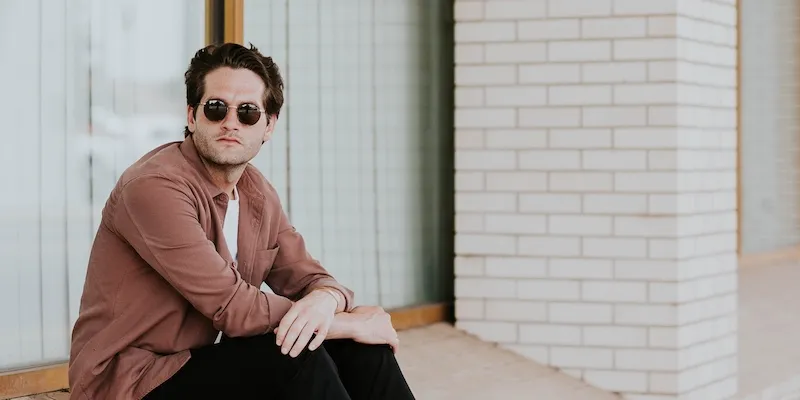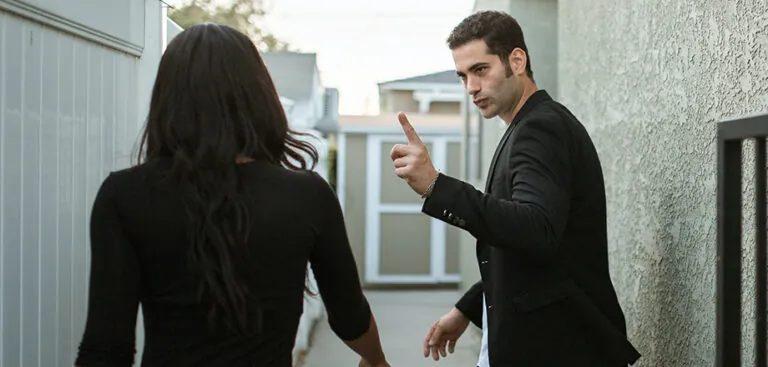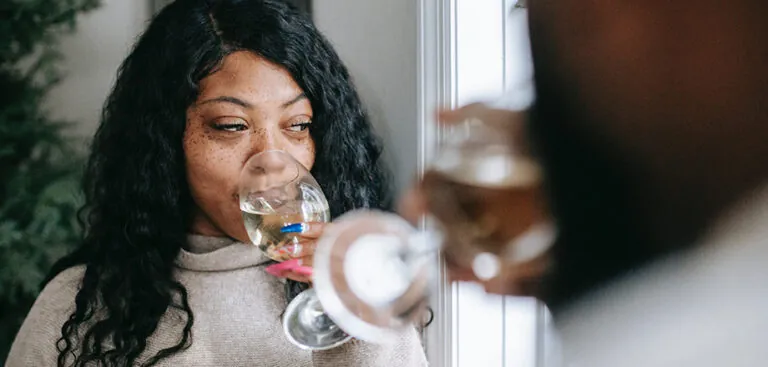How to Stop Dating Emotionally Unavailable Men
It’s time to stop dating emotionally unavailable men and find the love you deserve.
Emotionally unavailable relationships can be intoxicating… until they’re excruciating. You get pulled in by the potential, but always feel like you’re reaching for something just out of grasp.
These patterns don’t just cause confusion – they cause real emotional injury. And while most people can name the dynamic, few feel safe enough to actually change it.
If you’ve been reading this 3-part series and working through the companion worksheets, you’re not just naming the pattern – you’re starting to shift it.
In this final post, we’ll look at how emotional unavailability shows up in your life right now – and how to respond in ways that protect your boundaries without abandoning yourself.
Haven’t seen the earlier posts yet? Start here:
- What does it mean to be emotionally unavailable? (Part 1)
- How to tell if someone is emotionally unavailable. (Part 2)
- How to stop dating emotionally unavailable men. (Part 3)
Already read them? Great – grab your final companion worksheet and let’s get into it.
The cost of emotional unavailability.
Emotionally unavailable relationships set you up to feel alone. They create the illusion of being connected with people however, the truth is you are emotionally separate.
If you’ve ever wondered how it is you could:
- Work in a crowded office
- Have a million Facebook friends
- Know everyone at the gym
- Have a ‘thriving’ social life
Yet still feel alone in a crowd, you can bestow the honour of that gift upon emotional unavailability.
Emotionally unavailable relationships are toxic and the patterns will spread to multiple relationships rather than remain in just one. The only hope you have in removing the pattern (and the pain) from your life is to start with patient zero – yourself – and do the work.
That means you break down the barriers and obstacles you set up to keep people out, and then learn how to let people in. I am fully aware doing that in real life is a tall order…so where do you start?
Step 1 – what are your coping mechanisms?
Look at your worksheets from Parts 1 and 2. There you should have a good start at identifying the impact this toxic behaviour has on your life.
To help fill in more of the blanks, let’s start by looking at the list of ‘symptoms’ for emotionally unavailable relationships from the last post. One of them is: ‘Avoiding commitment – to both plans and people’.
Ask yourself:
- “When have I experienced this in a relationship?”
- “What is the impact of that on me and on the relationship?”
For me, when I have experienced this behaviour from others, it has led me to question the other person’s involvement and level of interest or commitment.
Someone being unwilling to commit to plans, leaves me feeling like I’m not important or I don’t matter that much to them. I start thinking irrational thoughts like:
Maybe they:
- Don’t commit to anything because they don’t know if they’ll still want to talk to me then
- Won’t want to be with me by the time the plans are supposed to happen
- Are waiting (or worse, hoping) for something better to come along
With thoughts like that going on, I’ll start acting ‘weird’, making assumptions, withdrawing, trying too hard, proving why they should want to spend time with me, etc.
I’ve also been known to do the exact opposite and launch a ‘preemptive emotional counter-attack’ by judging them for something (usually quite insignificant) and writing them off before they can do that to me.
Basically, I’d start acting cool and aloof. I’d decide (based on their behaviour) they’re inevitably going to hurt me, so I’ll come up with a justifiable reason to keep myself emotionally unengaged and distant.
Before I started doing the work on myself to deal with this dysfunctional behaviour, I didn’t even notice it happening. All I knew was that I had consistently shitty relationships where I was either heartbroken or breaking hearts. There was never any middle ground.
Other behaviour examples of emotionally unavailable relationships and the corresponding reactions:
Their behaviour:
They have trouble receiving anything. This can mean they’re generous with their time, money, compliments, praise, attention, concern, etc. for you, but they have an extremely hard time receiving any of that in return.
The think/feel/act/reaction:
This is one that I know used to run rampant in my life. Sometimes it looked like me not allowing (blocking) others from contributing to me. Alternatively, I would attempt to build relationships with people that wouldn’t let me contribute to them. In all honesty, this is still something I have to be mindful of today.
In some situations, the thinking was I didn’t believe they were ‘contributing’ to me (time, help, attention, love, etc.) because they actually wanted to. I had a limiting belief that they felt obligated to give, for varying reasons.
That would often happen in business and friend relationships. The following was more common in my romantic relationships.
In other relationships I felt like there was no real space for me to connect and contribute to them. Even though they said they wanted a relationship, there was no room for me. That left me feeling inadequate and not enough, again eroding my self-esteem.
Experiences like that (and with a belief system like that) totally eroded my self-esteem.
Their behaviour:
Regular deflection, avoidance, and blame is the way they roll. They’ll focus on the “what’s going on over there with you” rather than the way they’re contributing to the situation.
The think/feel/act reaction:
This coping mechanism is really brutal in relationships.
When one person constantly deflects or points blame back instead of taking responsibility for their role in the problem and working for a solution, the relationship is a breeding ground for resentment, contempt, anger, and mistrust.
When this behaviour is at play in a relationship, you’ll never have an emotionally satisfying conversation because there’s no ownership of who’s doing what and the impact of that.
Listen, we all have coping mechanisms and behaviours to protect us from getting hurt. If you want to stop this painful cycle, you need to figure out yours (how you think/feel/act) so you can stop repeating this hurtful pattern.
Step 2 – new boundaries; what would you rather?
By now, you can see what emotional unavailability looks like in other people. You’ve also identified some of your own behaviours in this area, and you’ve seen the impact…Now what?
The answer is: setting new boundaries for yourself to live by so you can stop the cycle.
The trouble is, most people don’t know how to identify those boundaries… My suggestion is to look at the impact you’ve felt in these relationships and identify what you would rather feel instead. Once you know what you’d rather experience, it’s easier to see what’s missing currently and deal with that.
Examples of new boundaries:
Behaviour: They have an inability to commit to plans.
New Boundary: Planning ahead with flexibility.
In life, there is a need for flexibility. However consistent avoidance or refusal to make plans in advance won’t work when it comes to building trust and connection in a relationship.
Of course, it’s necessary to have room for spontaneity – “Hey! What are you up to? Wanna grab a coffee?” and there also needs to be a willingness to make and commit to plans in advance – next weekend, the weekend after, or a vacation three months out.
Behaviour: They have trouble receiving.
New Boundary: Consciously practice allowing and receiving.
In order to get connect emotionally, at a deep level, people need to be able to receive just as much as they give. That includes everything from compliments, to help, to love and affection.
Basically, they need to accept ‘being lovable’ – that they are that. If they have no room to be loved for who they are – as the very one they are – a truly connected relationship isn’t possible.
That doesn’t mean don’t be friends with them. However, it does mean you might want to reevaluate how much emotional energy you’re willing to invest in the relationship with them. Sometimes it might be easier (and emotionally safer) to move them from the ‘important people category’ back to the ‘acquaintance category’. Or at least be very clear with yourself about what you can expect (and not expect) from them because they struggle to receive.
Behaviour: They default to regular deflection, avoidance, and blame.
New Boundary: Personal responsibility.
In order to feel safe and connected in a relationship, the other person has to be willing to be 100% responsible for their 50% of the relationship.
Let me say that again: You are 100% responsible for your 50% of the relationship.
So are they.
No more. No less.
That means when a topic needs resolution, both parties have to ‘own’ their contribution to the situation and look for a solution. This is all for the greater good of the relationship.
You want to feel like you’re playing on the same team with the important people in your life, not as an opponent. In order for that to be possible, there has to be a high level of personal responsibility present.
It’s a radical act to declare new boundaries for yourself!
Taking this kind of action in your life always feels like a big, bold step.
Setting boundaries can feel like a bad thing, like you’re drawing a bunch of serious and heavy lines or rules. It can feel like you’re doing something wrong or like you’re being mean. It can feel like everyone will leave if you set a boundary – and they likely will (even if it’s only a slight backing away) if they’re emotionally unavailable.
However, wouldn’t you rather have functional relationships even if that meant you had less of them? Wouldn’t knowing that the people you hold close in your life have the emotional awareness and comfortability to be able to build a healthy and connected relationship, be better than having a bunch of dysfunctional, drama-filled, and emotionally unsafe relationships?
I have experienced the impact of emotional unavailability in friendships and romantic relationships alike. Even when that special person is next to you, you still feel alone. All you can do is work on yourself and make better choices about the people you have in your life.
That brings me to my final point: YOU have to do the work.

Step 3 – it’s up to you.
Now all that’s left is for you to do, is the work on you. This is great news! You have total control over yourself and how you choose to handle this, you you are not longer at the mercy of shitty relationships and dysfunctional people in your life!
Working on you means you heal what you need to heal, and deal with what you need to deal with. That way you’re no longer acting emotionally unavailable in your relationships. It also means you won’t put up with people being emotionally unavailable with you.
I’m not gonna lie, doing work like this is easier said than done. There’s no silver bullet, especially if you’re trying to do the work on your own. I will say however that it is 100% worth it in the end.
The freedom you will feel for yourself once you have done the work is incomparable.
Some closing thoughts:
1) There are some relationships where there will always be a level of emotional unavailability, and even though there’s nothing you can do about it you still want to keep the relationship. That’s ok as long as you’re clear on what the limits are in that relationship. When you know what the limits are, you can set and keep your expectations in alignment with those.
In other words, learn how to accept the relationship for what it is.
2) As I mentioned in part 1 of this series, there are some relationships that have complimentary ‘unavailability coping styles’.
This might look like someone who always has the ‘right answer’ paired with someone who avoids responsibility and never knows what to do. That pairing can work, as long as both parties stick with their styles.
In these types of relationships, there’s little room for growth and development. The styles need to stay the same in order for the relationship to work. If one person changes their behaviour (i.e. stops playing the victim and starts taking responsibility for themselves) the other person likely won’t react well to not being right all the time and the other person having an opinion.
The same goes if the ‘always right’ person decides they want to start being less controlling and create more of an equal partnership. The person who is used to having everything decided for them may not respond well to having to take on responsibility for themselves.
When both parties enter into a relationship as emotionally available people then there’s always room for continued change and growth. This is because continued growth and change no longer seem like a threat to the status quo. There is more room for flexibility, collaboration, and co-creation.
3) There are degrees of emotional unavailability that can shift slightly over time depending on how things are in the relationship.
Unless serious and focused effort is put into changing the stuff that causes the unavailability in the first place, any shift that does happen won’t be that significant. It’s important to keep that in mind when you find yourself looking at ‘potential’.
4) I think it’s infinitely harder to do the work on yourself, by yourself and out of all the things people try to work on by themselves, I think this is one of the hardest.
In general, the ‘stuff’ that makes up these emotionally unavailable tendencies exist in the shadows of your blind spot, making them virtually impossible for you to see on your own.
There are tons of resources out there that can help you sort this out. If any of this topic resonates with you, I highly recommend getting some outside intervention.
Join a group, hire a coach, find a counsellor or psychologist. Find an expert that can support you in making the change – this change especially!
Just like if you had a chronic or serious issue with your health, you wouldn’t rely on Google for answers… so don’t do that with this situation either.








